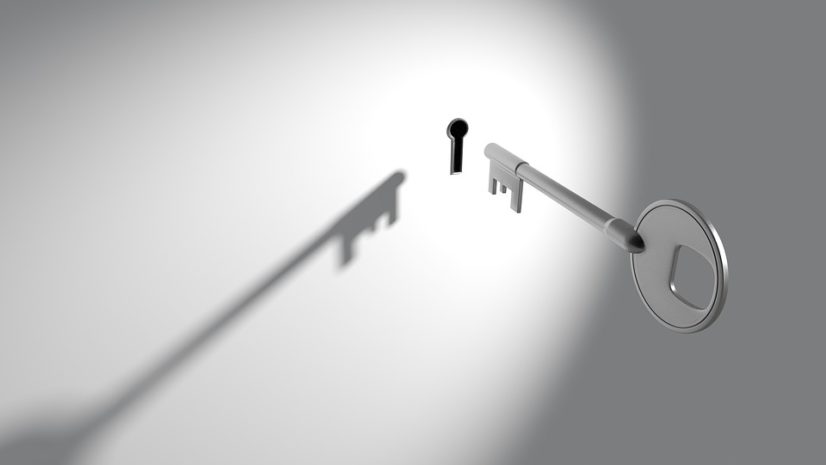Preventing unauthorized entry — door access control — has been a challenge through the ages. For nearly 6,000 years, dating back to ancient Babylon and Egypt, this has been a task for the lock and key. But today’s card readers and key codes represent tremendous advances in controlling access to commercial buildings, offices, warehouses, parking structures and similar facilities. Moreover, today’s most advanced identity management/access control systems incorporate a wide range of advanced digital and visual technologies. Properly integrated, these innovations can be configured to help facilities managers achieve greater control over building security: who gains access, when and where?
Employee Access Control Systems
When controlling physical access, your threat vectors are many, but the fundamental concern remains: You cannot afford having the wrong people gaining access through the wrong gateways at the wrong times. Today’s access control security systems help to achieve this and related objectives by linking hardware with software.
When it comes to hardware, your choices include:
- Keypad Locks. The keypad is today’s most basic programmable access gateway. Employees are given unique PINs, typically between one and six digits. A valid PIN opens a door lock and records the activity for future review or audit.
- Keycard Scanners. Closely related is a key card reader, which allows employees to be assigned a unique identity card or key fob. Keycard scanners are simply scanned to enable entry. A slightly more advanced version of this technology incorporates a chip, making it a smart card. In each instance, there are fundamentally two forms of card readers: devices where the card must be inserted, and those that allow for surface swiping or proximity readers. The question to ask is: “How difficult is it to create a counterfeit?” The greater the sophistication of the cards and reader, the greater the security.
- Smartphones. Either in combination with a keycard or standalone, scanners can be equipped to require each entrant to scan their smartphone. Given the ubiquity of smartphones today, a growing number of access installations are incorporating this form of dual-factor authentication.
- Biometrics. Today’s most secure access systems go on to require a fingerprint, ocular, or facial verification.
- Video Surveillance. The above measures can also be supplemented by video surveillance. Video feeds can be used as a real-time deterrent to unauthorized access, and can also be useful during after-the-fact investigations.
The above hardware elements can be chosen a la carte, but for a system to be effective, its components must be integrated. Today’s most sophisticated software introduces a wide range of capabilities.
Fundamentally, access control software can grant or deny passage based on identities. In the days of locks and keys, a building administrator would need to physically hand a set of keys to anyone given authorization to enter a specific area. But when keys are lost or stolen or a person leaves the company, replacing the locks or retrieving the keys could be a difficult, awkward or expensive chore. In a software driven environment, permissions can be easily managed, transitioned or revoked.
Beyond real-time access control, sophisticated software can also provide meaningful audit data. Dashboards can help building administrators track which people have had access to which parts of the facility and for how long. Internet and cloud-based programs enable authorized administrators to review, track, grant or adjust permissions remotely. Real-time configurations can also send alerts to relevant building staff indicating attempts at unauthorized access, unusual access patterns or any of a number of suspicious or unexpected events.
Video Surveillance
Where security is paramount, access systems can be further supplemented with security cameras. This addition of visual information can be of value in real-time, giving security teams a clear look at what is happening, but can also prove invaluable for after-the-fact investigation.
Unauthorized infiltration often occurs as a result of so-called tailgating — instances during which one person gains legitimate access but is quickly followed by a bad actor before the door closes or the lock re-engages. Here, a video installation can serve as a deterrent but it will not absolutely prevent this occurrence.
An even stronger means of lessening this risk is to add physical turnstiles or similar buffers to an entryway, limiting passage to one person at a time. Moreover, it can also be effective to offer education to employees, reminding them that no one is to be granted unauthorized access. Even those wearing the uniform of a delivery driver or similar agency need to obtain formal permission to enter.
A final advanced level capability worthy of consideration is the combination of video with access control, all residing either on employee laptops or smartphones. Say that a client or gig worker who is well known to the business but does not have routine building access has entered a remote waiting area or lobby. By integrating video with the access control system, an authorized employee can see and identify this person then grant access remotely without having to physically walk to the lobby.
Final Considerations
The greater the sophistication in hardware and software, the greater the security, but also the higher the costs. In addition to acquisition and installation costs, building managers also need to be aware of potential subscription costs for software or upgrades. There may also be a need to make modifications to existing facilities, such as through the addition of networking and electrical access panels.
Although any building can be retrofitted with access control capabilities, it is best to consider such options in the design and construction planning phases. Finally, care must be taken to hire a capable and experienced installer. Look for references from clients with similar security needs.
Taylored Systems serves businesses of all kinds and sizes in Indiana with customized technology solutions, including those for door access control. Our team understands that each business is unique, and its team is dedicated to providing customized solutions for security, IT, voice and structured cabling. Contact us today to get the conversation started!

